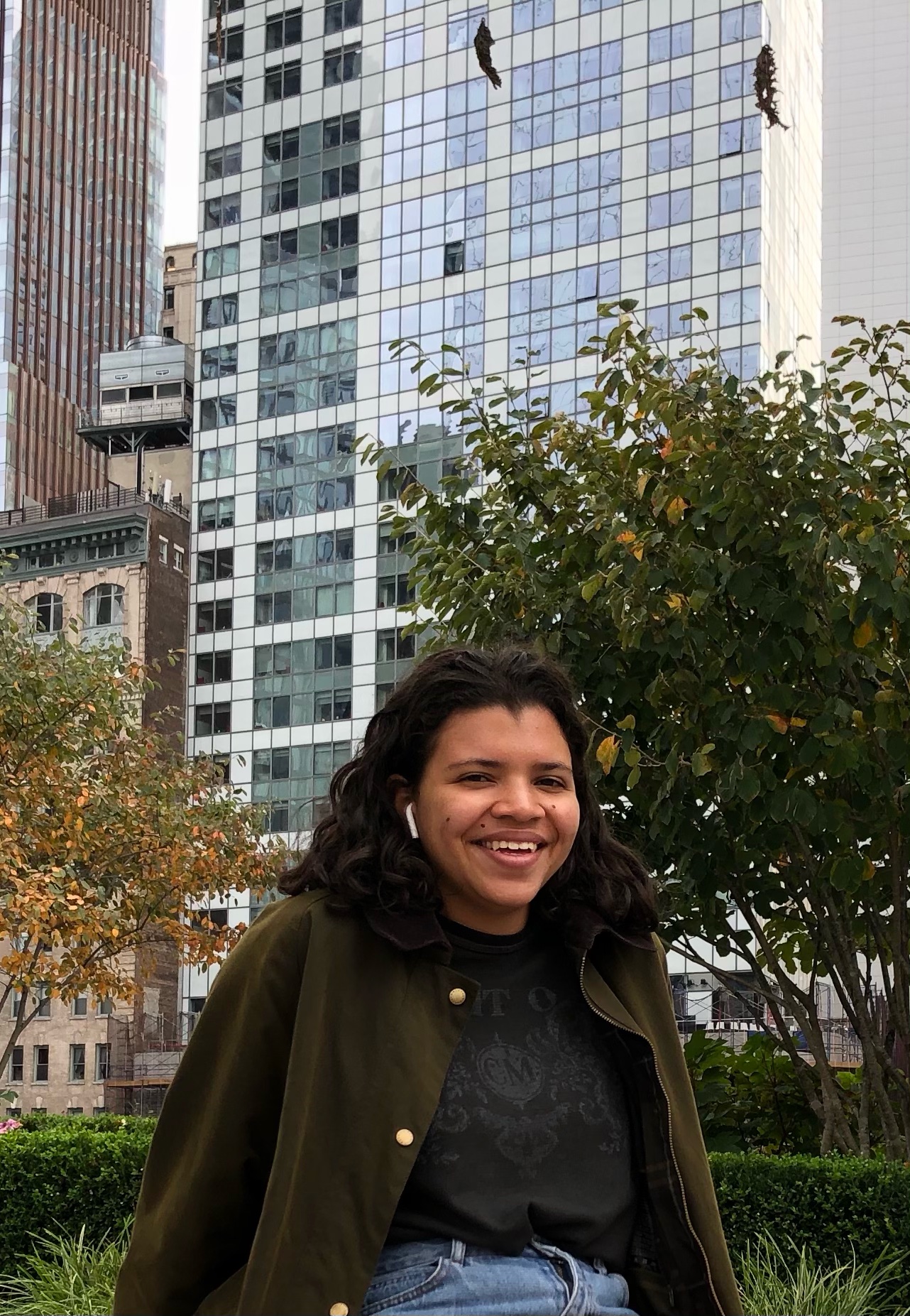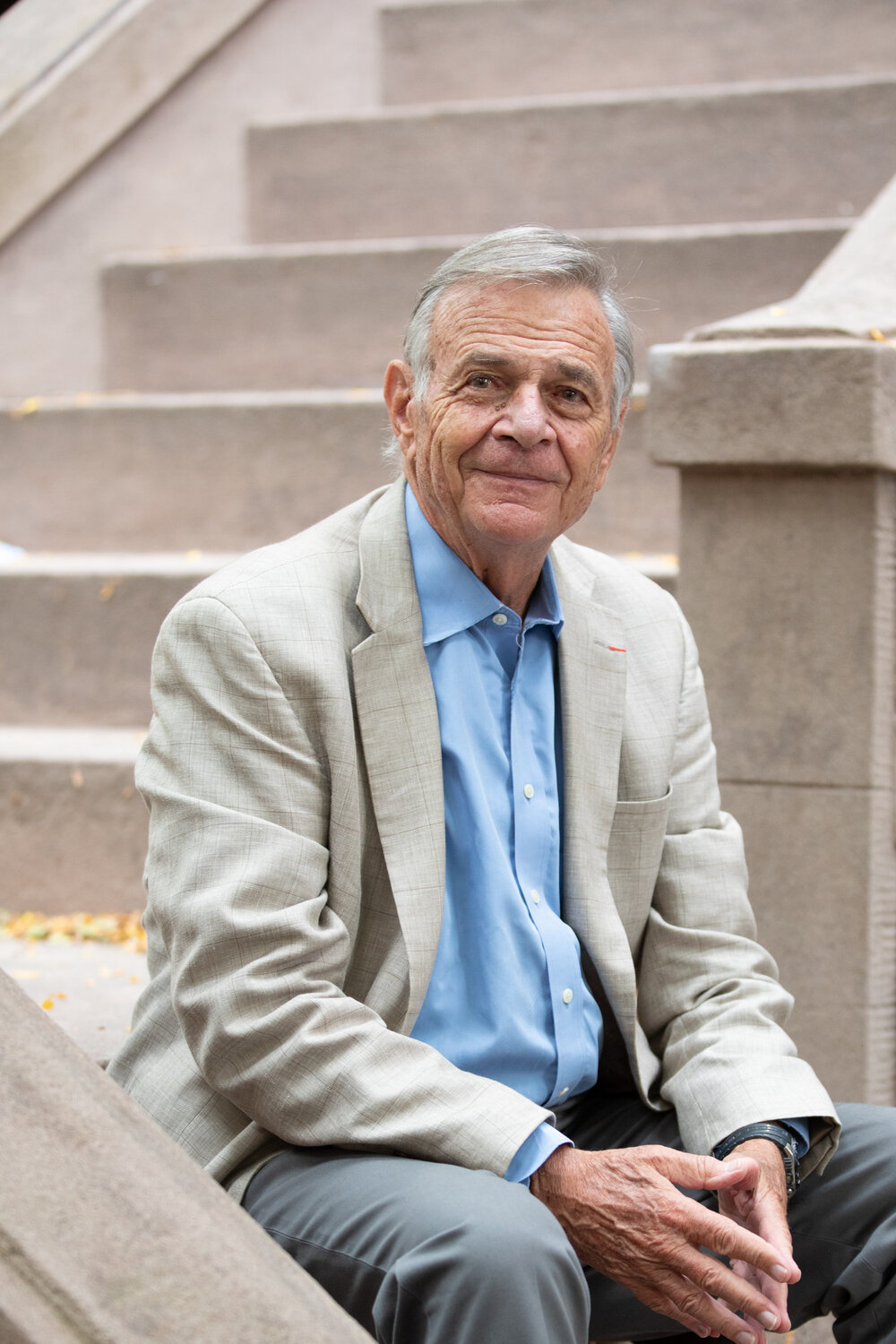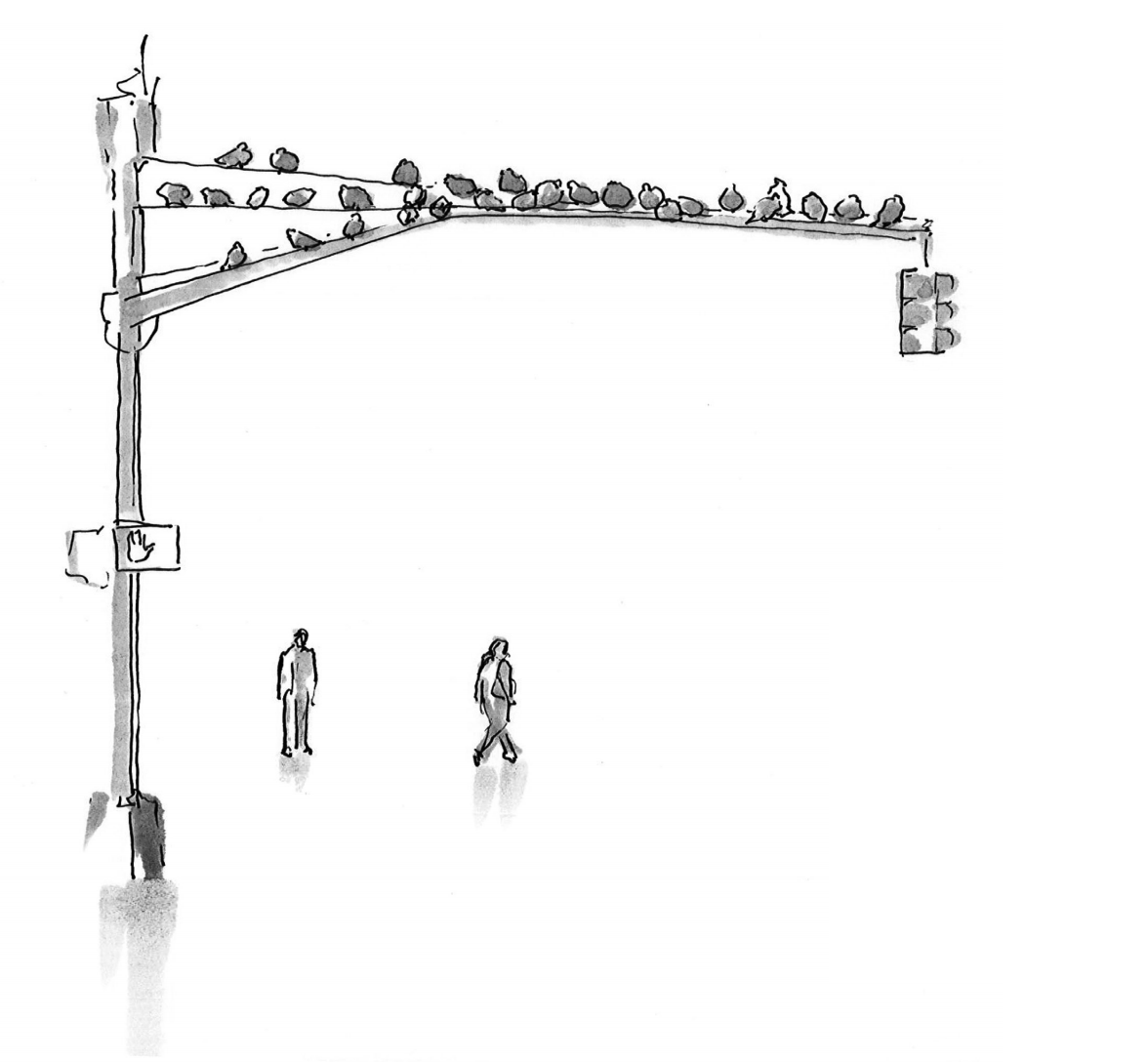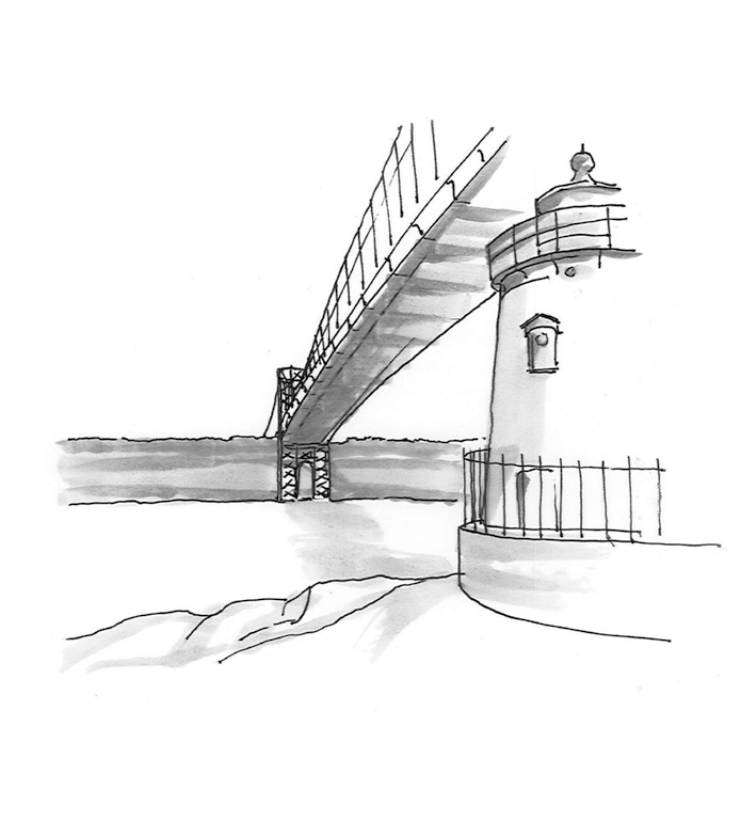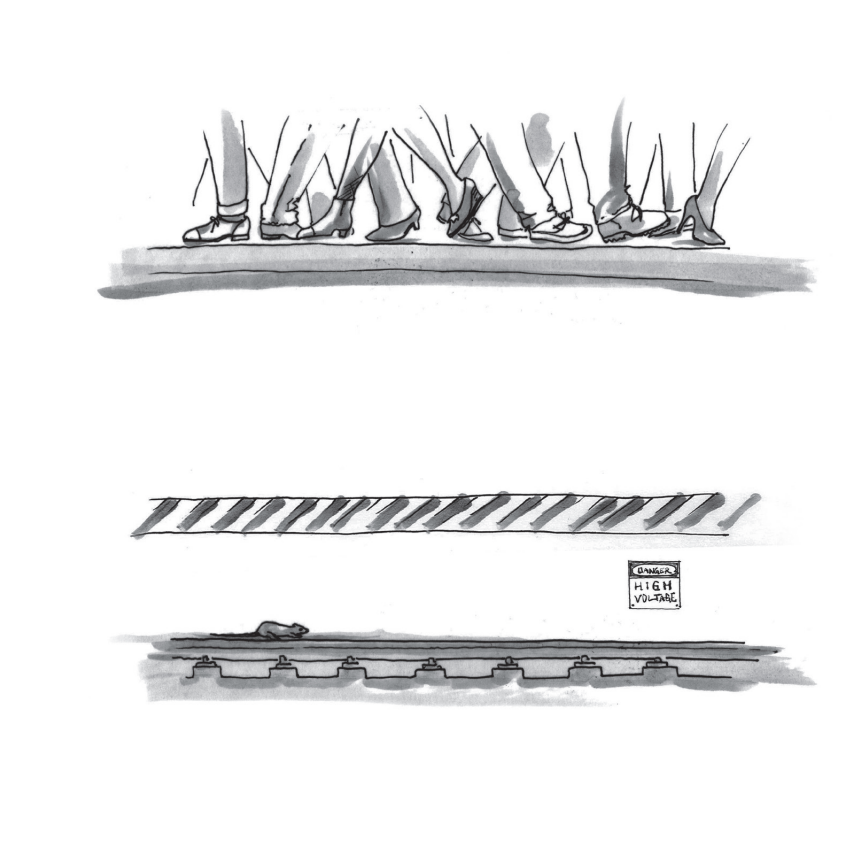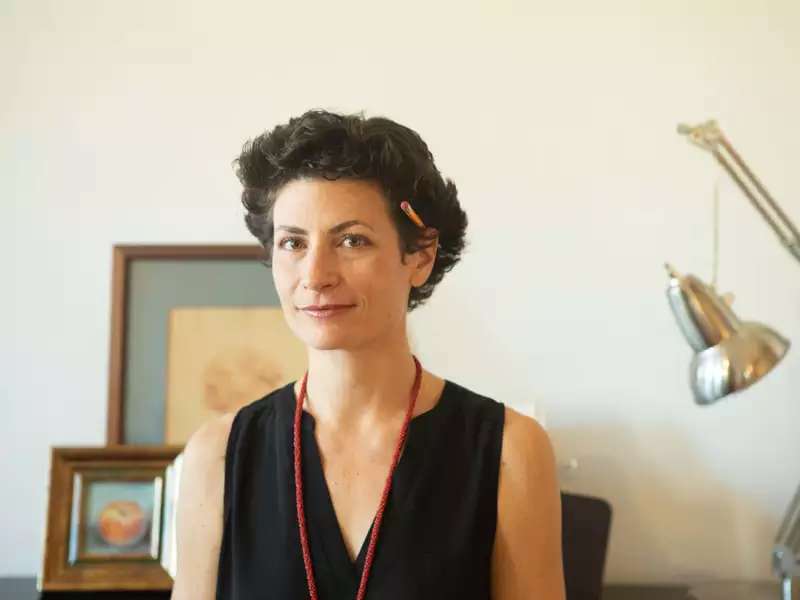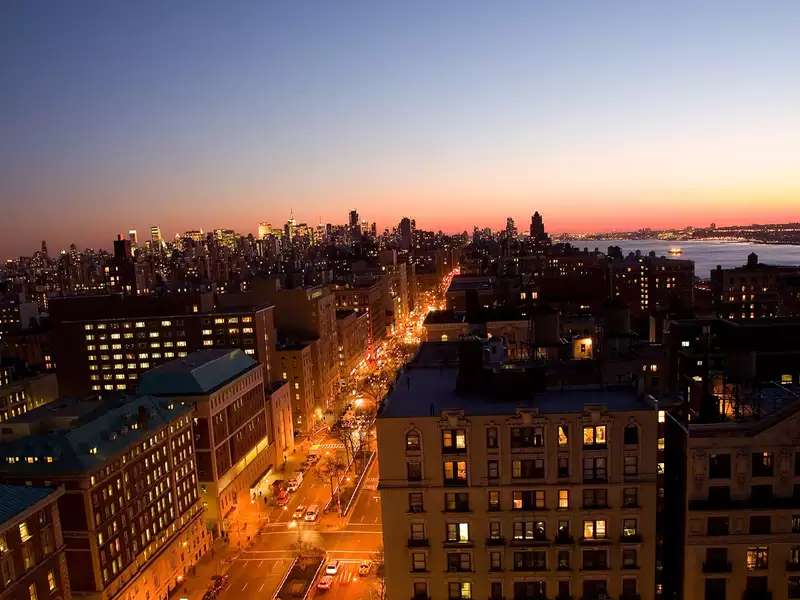During the height of the pandemic last summer, New Yorkers expressed appreciation for frontline workers by clapping, cheering, and clanging pots from their stoops and windows. In the midst of this daily love fest, Barnard’s associate professor of professional practice and director of Sustainability and Climate Action, Sandra Goldmark, began a creative collaboration with her father, Peter Goldmark, an independent consultant who helps foundations strengthen their climate change strategy. The result was a new book, Haikus for New York City, for which Peter penned the poems and Sandra drew the illustrations.
The week after Haikus was published on April 6, biology major and pre-med student Magdalene Pernambuco ’22 — Peter’s granddaughter and Sandra’s niece — hopped on a Zoom call with them from her Barnard dorm, to discuss the collaboration. A native New Yorker herself, Pernambuco said she enjoyed hearing how they each viewed the City, and that the book offered her a new perspective. “The drawings in the book, with the words together, helped me look at things that I’ve been looking at my entire life and see a beauty or change or sadness that I hadn’t noticed before,” Pernambuco told her grandfather and aunt.
For more on how the father-daughter team collaborated through COVID-19 and why these three New Yorkers love the City, read Pernambuco’s interview with the Goldmarks below.
Magdalene Pernambuco ’22: What was it like working with a family member on this book?
Sandra Goldmark: We did most of the work over the summer in August. We were in person a fair bit because we were in each other’s COVID bubble. I would say it was fun and strange to work with my father. I’ve always heard about his professional life, but we’ve never actually worked together on a project. I’m used to design meetings, where you look at a rough version of something, and I remember our first design meeting looking at the rough sketches. When my dad looked at them and I looked at his face, I thought he was super puzzled. Rough things are often very messy, and we were coming from two very different professional backgrounds, in terms of how we operate. But it was also fun to find the common ways of working and come up with sketches that I think we’re both happy with.
Peter Goldmark: It was an amazing experience. I know Sandra is very talented. I’ve seen the things she’s done and the way she’s moved into new worlds and mastered them, but I had never had the opportunity to work on something specific with her and to really understand her breadth, her ability to work at several different levels at once. Very few people have her openness to new ideas or disagreement on something. At the same time, her strength, particularly when she thought she was right, was shown in a very firm way. For me, it’s added a dimension to our already wonderful relationship that I couldn’t have predicted. The most amazing thing I got to say about Sandra’s contribution to this book is that she created a whole additional dimension. She added drawings that have a life of their own, and they could exist without the haiku, without the poetry, which is absolutely amazing. I didn’t even know about that possibility, but one person who did that — unbidden, unexpected, unheralded, and suddenly there it was — was my daughter.
Pernambuco: Were there any challenges you had to overcome when you were doing this?
Peter Goldmark: Not for me. It’s Sandra who was working with her heavy-handed father.
Sandra Goldmark: My father’s the opposite of heavy-handed. I was impressed with his ability to put his work out there, which is never easy. It’s especially hard to put your work out there when it’s very personal and close to an artistic and emotional expression that is based and built on your life in the City where you’ve worked your whole life. It’s not an easy thing to make yourself vulnerable in that way. And while I have some experience with that, because of working in theatre — where we ask everybody to make themselves vulnerable — I was consistently impressed with his ability to do that.
Pernambuco: The book has a lot of connections to the pandemic and to how you guys were feeling. What does publishing this book during COVID-19 mean to you?
Peter Goldmark: The changes in the City have been quite substantial but this book is more about the continuity of themes in responding to COVID, rather than new themes — people hurrying, the difficulty of finding peace in the City. You can’t chase it or rush it, as the haiku says, but sometimes in New York, peace will find you. That’s continued to be true. The resilience of New Yorkers was on display, and their desire to help each other was there. So in that sense, it was a new challenge, new event, new circumstances but many of the themes that have made this city wonderful and great, and that’s why it’s in part a book whose drawings and words help us rediscover, celebrate, and honor those themes.
Sandra Goldmark: When you do a drawing, you have to stop and really look at it. It’s an opportunity to pause and truly see what’s in front of you. I’m rushing to my dentist appointment in the one moment that I have in COVID, and I paused in the middle of Columbus Circle and see this construction worker lounging in front of a statue and I think that moment — that chance to pause and look and see, whether it’s to feel the sadness, or to appreciate the beauty, or to see the humor, the chance to reflect and appreciate — is the only sort of opportunity I see in the COVID moment. And maybe taking those themes from the past, to begin to look forward.
Pernambuco: We’ve all had our own New York experiences, but what do you love about New York?
Peter Goldmark: I love the grit that is in the spirit of the City. I love the humor and the sarcasm. I like the curious blend that New Yorkers have of being, at the same time, open, talkative, ready to have a conversation about anything, but also to set limits; they don’t totally empty their souls on you. New York is far from perfect, but it is multidimensional. It has an enormous concentration of talent, ambition, wealth, some suffering, some need and poverty. In that sense, it is a bit of a microcosm of the human experience. How it all happened defies the imagination on this rocky, little island of Manhattan. All these buildings were built, all this money was made, all these ideas were discovered, all this art was created. It’s amazing.
Sandra Goldmark: I love the history of the City. I love the physical landscape, in the sense that there’s this amazingly built environment but threaded through it is the foundation of the natural landscape that we live in, which is unbelievably striking — the rivers, the parks, the green spaces. I’m almost less critical and less able to perceive it because this is my home. I love the City the way you love a family member. It’s always been there and always will be.
Pernambuco: You talked about how New Yorkers won’t empty their souls on you, but if you fall down in the street, 10 people are going to be there to give you an arm up. That’s just how it is, and that’s become a part of who I am. During COVID, that was still exemplified in how we took care of each other. Do you have a favorite haiku and a favorite illustration in the book?
Peter Goldmark: Before we respond to your question, as a young person who’s just entering her third decade, as a New Yorker, do you feel that you can count on New York or is New York still on trial for you?
Pernambuco: I think New York will always be a little bit on trial for me because I grew up here, I’ve seen it change so much. I grew up next to Ground Zero, so I’ve seen the feelings of the entire City change over time, including the landscape. I’ve seen old wounds become new shopping centers. I think that part of New York will always be something that I’m examining and reacting to, but I can always count on the things that New York made me into. There’s an inherent kindness, not necessarily niceness, and I know that I can count on that. For example, I swipe someone through the train one day, and then the next day I forget my wallet at home and a stranger spots a coffee for me. It’s a kindness that I know I have, and I know that because it’s from the City.
Sandra Goldmark: Like the sketches and the poems are supposed to be a conversation, right? That’s what happened. And I’m realizing now, there’s a third voice in the conversation, which is the reader, the person who says, “Oh, I understand this. And I understand that, and here’s my voice in this little melody.”
Peter Goldmark: Which drawing do you really like, Sandra?
Sandra Goldmark: I definitely like, “You can’t rush it or chase it, but sometimes in New York, peace will find you.” That’s one of my favorite poems. One of my favorite drawings is from the “you can be alone” one.
Peter Goldmark: I love the drawings of the bridges. We approach them as different things. Oh, are you taking the Manhattan Bridge or the Brooklyn? But it’s all one nervous system. So, I love the bridges and the water scenes most. There’s the one that goes with a haiku that says no matter how fast you walk in New York, someone will always stride past you, and there’s a little rat walking along the rail of the subway tracks.
Pernambuco: I really like the subway ones. My favorite [haiku and drawing] is the one that says, “There’s a train directly behind this one” and then “New York City bullshit,” because it’s really familiar. And that it’s a person standing on the platform, which could be me later today. It’s a cross-section of a moment that everybody has when they take the train. That is a part of NYC that I didn’t really appreciate having until now, when I see what is basically a drawing of myself and all these other people who I know and love, in an angle that I didn’t think about. What would you like students to take away from this ode to New York City?
Peter Goldmark: A moment of realization, particularly if they grew up somewhere else, if the place they’re missing most is not New York. There are cities and places that are really different from each other, but some of the themes and things of New York — the questions it raises, the challenges it gives, some of the comfort it provides, the humor, and sauciness — are universal human themes. We are at a moment in history when it’s important to listen to and learn that we are all in a common adventure on this planet.
Sandra Goldmark: Seventeen syllables, one little book can’t really do all this, but we can point towards it. We can point towards the fact that as we are facing these huge global challenges in this common adventure, part of that process is also seeing and understanding where you are now. I hope the book also offers that to new New Yorkers, who are just arriving at Barnard, or for New Yorkers who have been here for 80 years, or 45, or 20, to give them that opportunity to pause, look, see, appreciate, love, and laugh at and with the City we call home.
Pernambuco, who says she is most creative when on the steps of Columbia’s Low Memorial Library, plans to attend medical school after Barnard, with a specialization in pediatrics.
